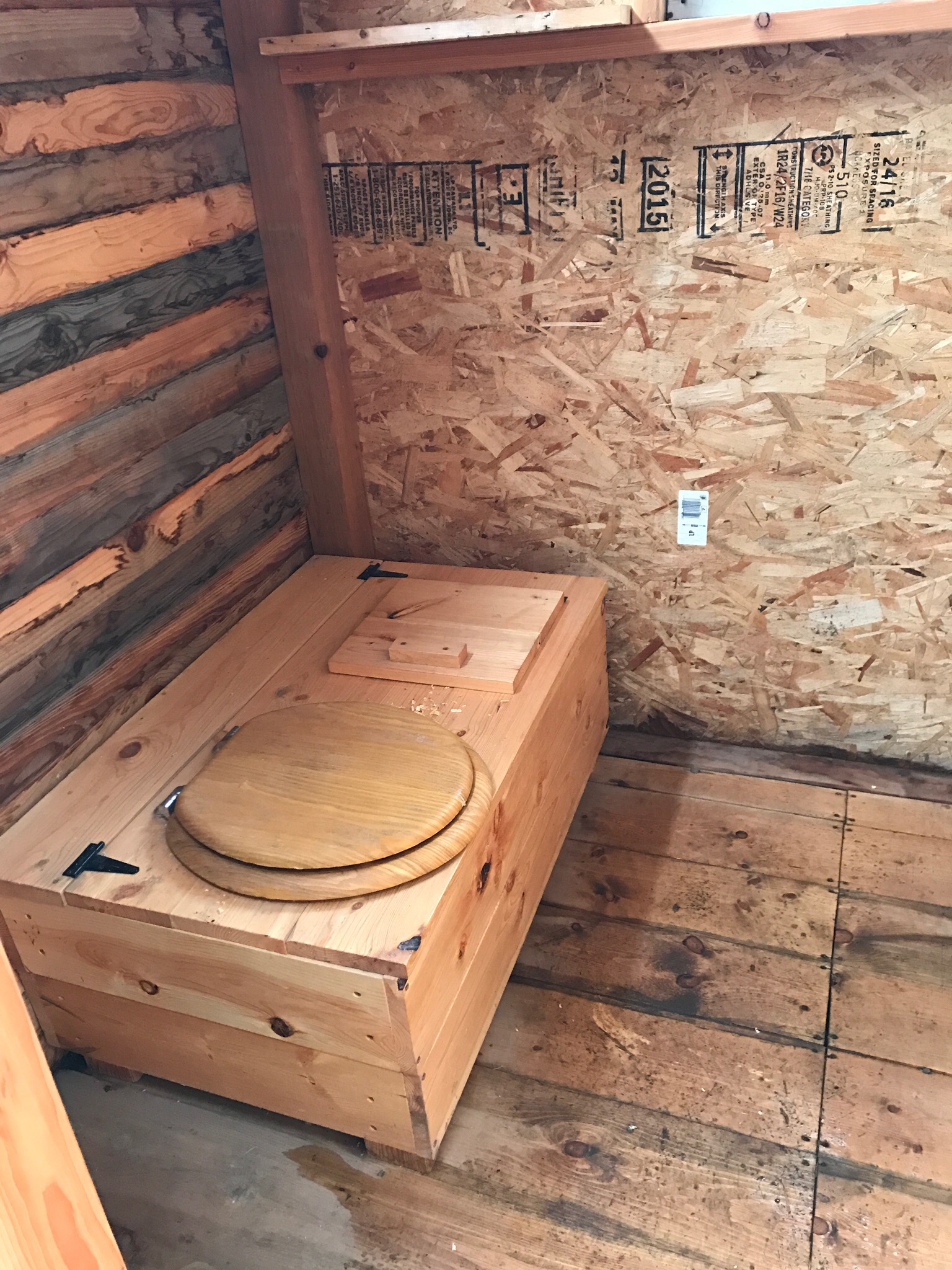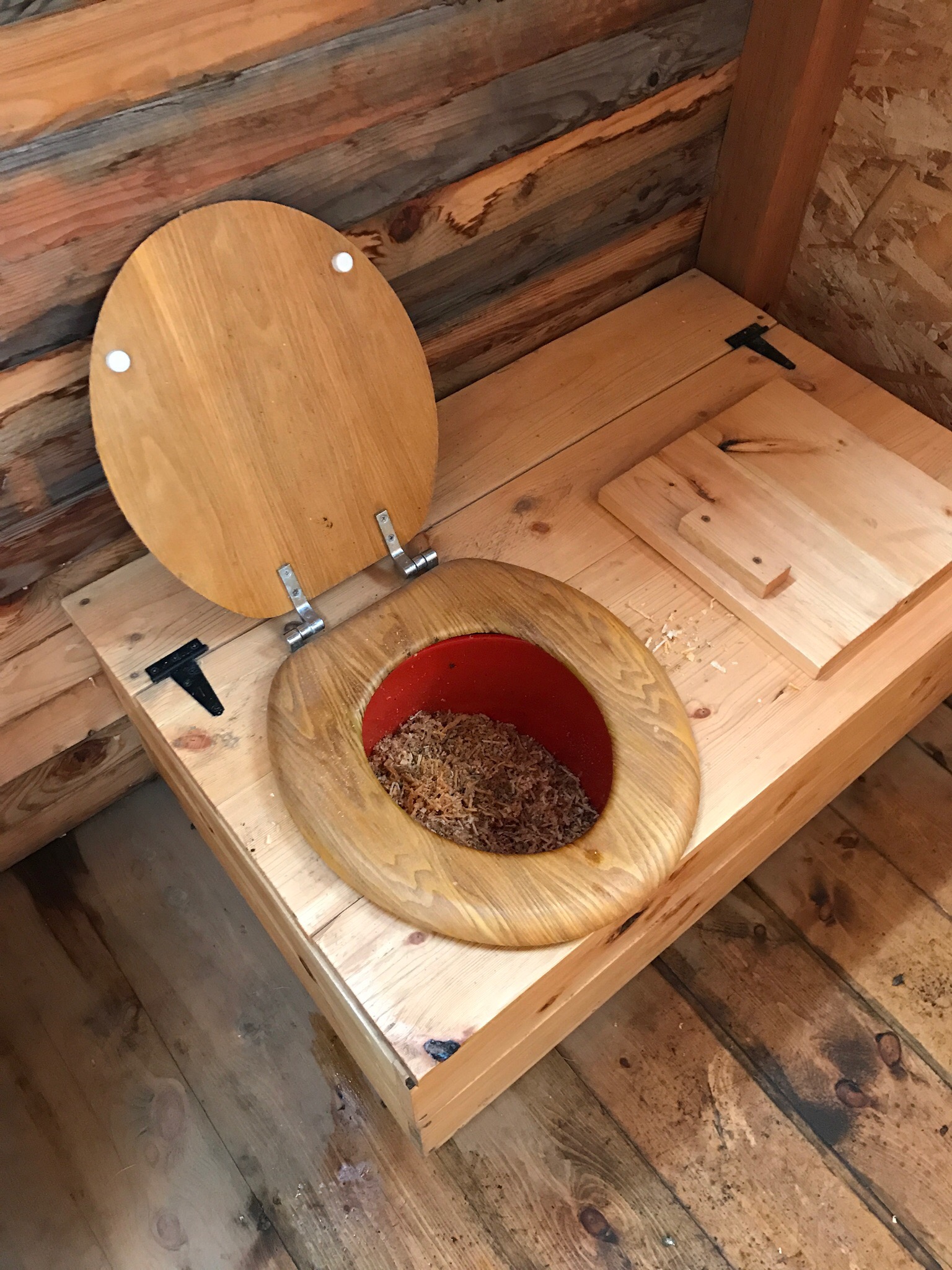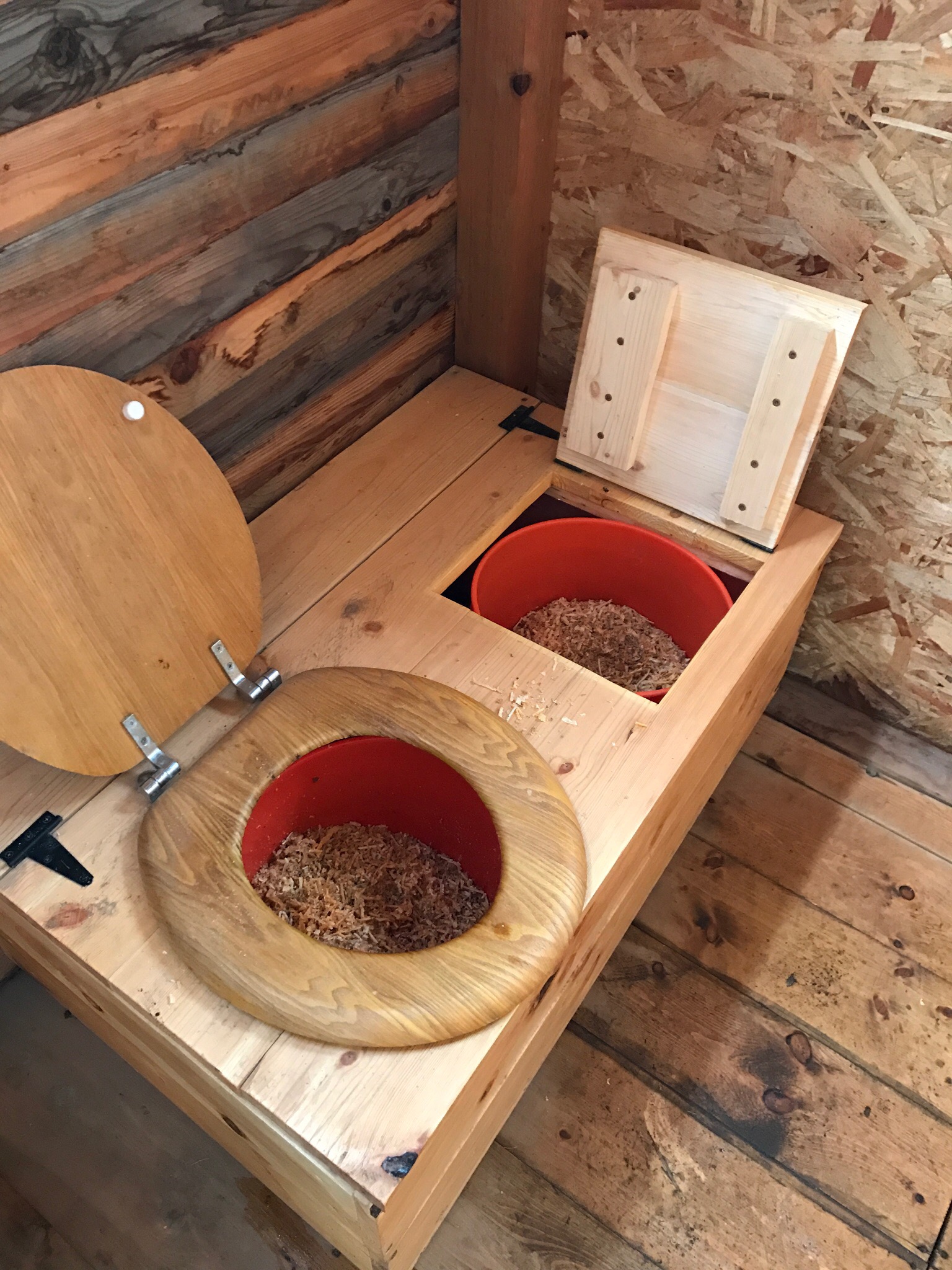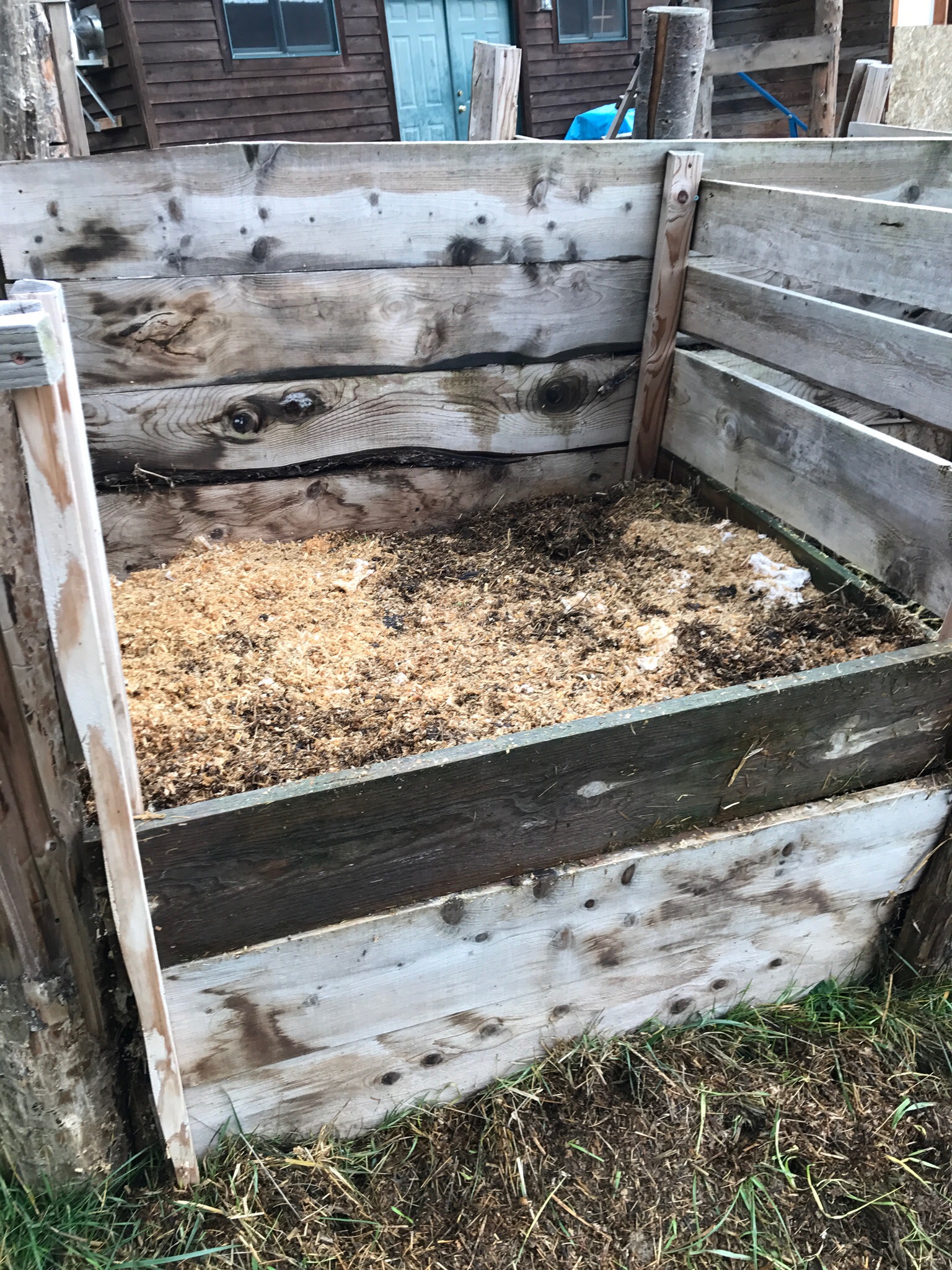
Let’s embark on the taboo subject of human manure! The problem of waste in an off grid or grid down situation is embarrassingly simple. Most people don’t consider waste when thinking about emergency preparedness. Furthermore, when most people do consider waste they look at it as a problem and not a resource. Human excrement is actually not waste at all, we only approach it as waste. In permaculture you will often hear, “the problem is the solution.” In this case, the “problem” really is a solution and is, in fact, a great resource. Whenever we consult with clients on property analysis & design we always recommend a dry composting toilet. This takes a problem and turns it into a resource.
First, let me give credit to Joseph Jenkins and the Humanure Handbook for introducing us to the simplicity, resilience and the wisdom of using a dry composting toilet.
What is a dry composting toilet?
A dry composting toilet (DCT) is a receptacle to catch waste (humanure) in order to recycle the organic matter. It requires no water, no digging of holes, no outhouse located 100 yards from the home and no chemicals. We told you it was embarrassingly simple.
Why should I have a dry composting toilet?
If you are on septic, having a DCT relieves pressure off the system, which extends the time between cleaning. If you have a low producing well a DCT relieves pressure off your well. If you are concerned about excess water usage a DCT saves about 15 gallons of potable water a day per person. If you like to go austere camping turn the trip into glamping. If you are off grid and can’t afford a septic system a DCT is an excellent replacement whether permanent or temporary. If you have a shop or a barn without a bathroom a DCT will save you time. If the zombie apocalypse or an EMP strike happens then a DCT will come in pretty handy. Get the picture?
Won’t it stink?
If you follow a few simple rules, then no it will absolutely, positively NOT stink. It’s pretty much the same as working a kitty litter box. Does it stink? Yes, if you don’t put kitty litter in the box, it stinks. If you don’t clean the kitty litter box for days it stinks. If the cats don’t cover their urine and fecal matter it stinks. Conversely if you use the right amount of kitty litter and keep up with it then it doesn’t stink at all.

In a dry composting toilet we have human urine and fecal matter and we have cover material. The right amount of cover material (carbon) mixed with humanure (nitrogen) doesn’t stink and makes wonderful compost. In fact, that composting action is key to reducing any risk of disease spreading.
How do I use it?
It is very simple. Put some cover material in a bucket, do your business and put some cover material over the top. That’s it! Use a bucket (5 gallon works great) until it is about 3/4 full and dump it in a compost pile. If you have any physical challenges then you may need to dump the bucket more often depending on any limitations you may have. If there are a lot of people in the home it might need to be taken to the compost pile daily, if there are only a couple of people it might need to be done only a couple times a week.

What kind of cover material can I use?
Use material rich in carbon much like you would for “normal” composting. Remember, the key is getting the carbon to nitrogen ratio right. Here are some examples of carbonaceous material: leaves (shredded preferably), sawdust, wood chips (the finer the better), shredded newspaper, pine needles, and peat moss. Any of these, plus many more I’m sure will suffice. In a pinch, wood ashes will work great for cover material, however, it isn’t the best for using in a compost pile . If you want to dive deep into composting we recommend this book
What do I do with the poo?
Compost it! Create separate humanure compost pile and begin composting it just like you would any other compost pile. In a “regular” compost pile you use browns and greens or carbon and nitrogen. You are doing the same thing except using cover material, urine and fecal matter or carbon and nitrogen. The difference in how you use humanure compost and regular compost depends on your own knowledge, experience and comfort level. Some people will only use humanure compost on ornamental type plantings, others will use around fruit and nut trees and still others use it like any other compost. The key is in understanding compost, carbon nitrogen ratios, temperature of piles, bacterial digestion, nutrient cycling and potential human pathogens. Read The Humanure Handbook for more detail.

Check out our online community for ways to help in your local food movement, learn about more medicinal herbs and much more.
Sean and Monica are available for consulting work regarding property analysis & design, personal coaching and speaking engagements.
Sean and Monica Mitzel homestead with their family on 40 acres and are using permaculture techniques and methods for the property. The homestead is a demonstration and education site where they teach workshops and raise dairy goats, sheep, pigs, rabbits, chickens, and ducks. The Mitzels have planted food forests, guilds and enjoy wildcrafting and propagating plants. Sean and Monica can often be found podcasting or speaking and teaching at different events. Listen to the podcast and to learn more about the Mitzels, visit The Prepared Homestead




Leave a Reply
You must be logged in to post a comment.